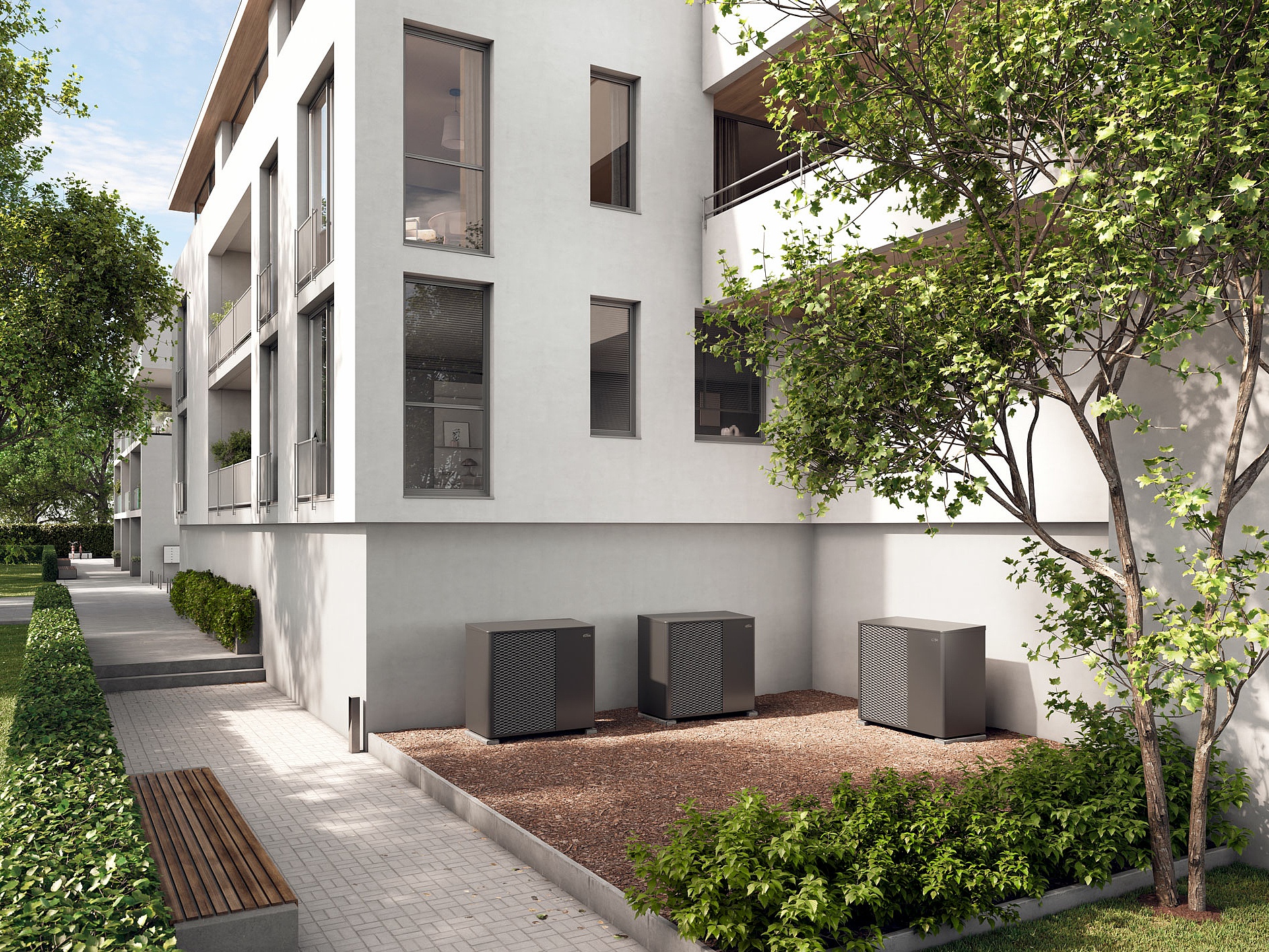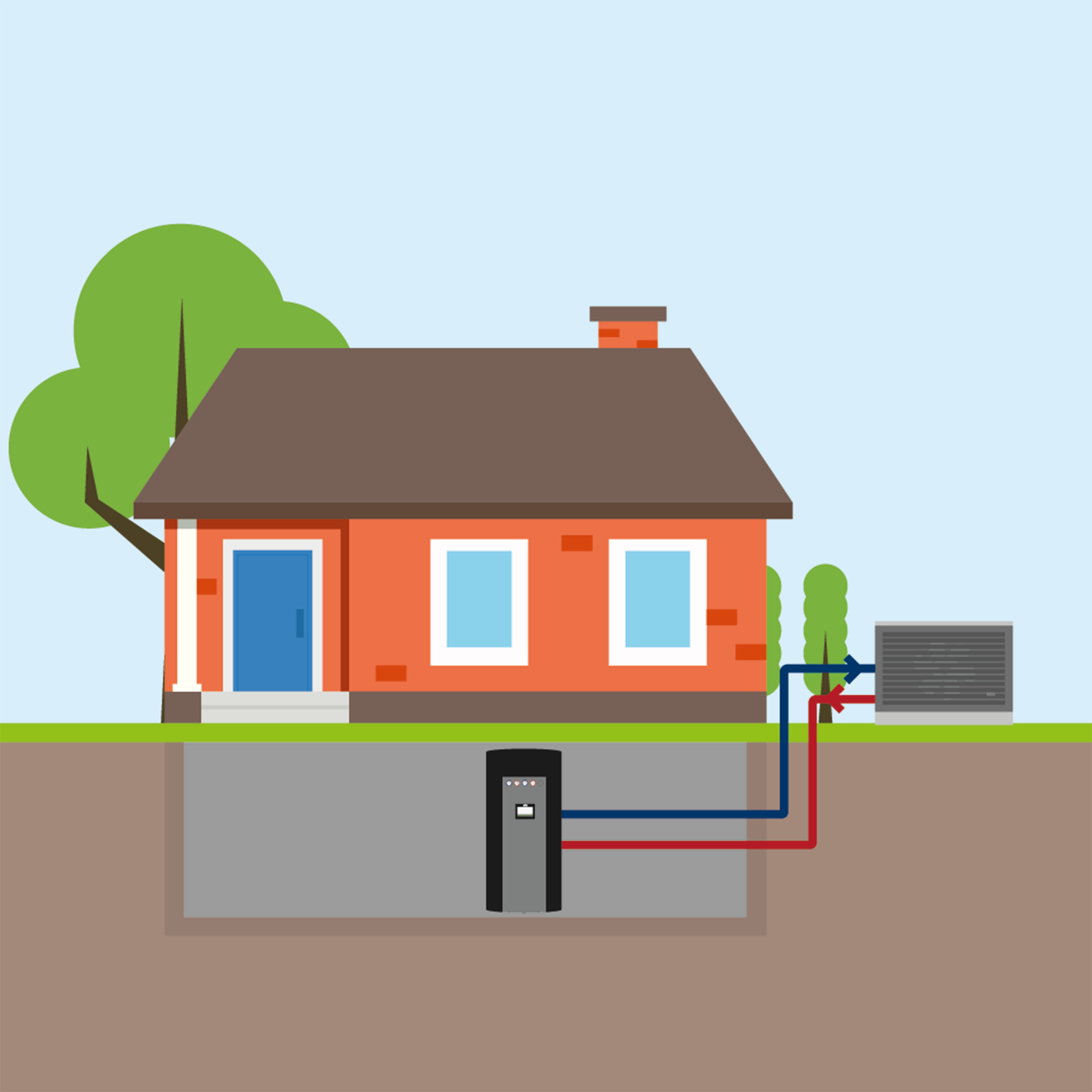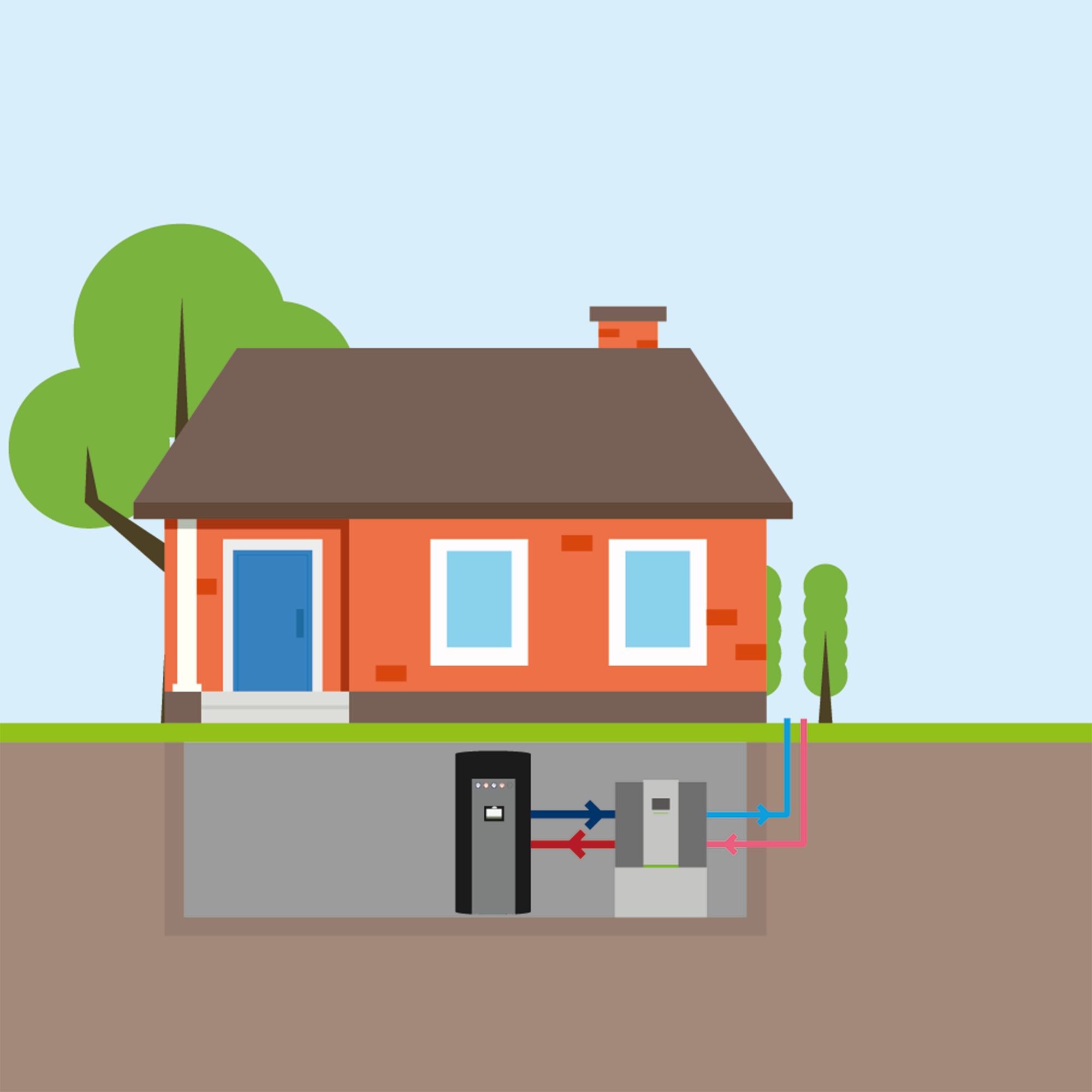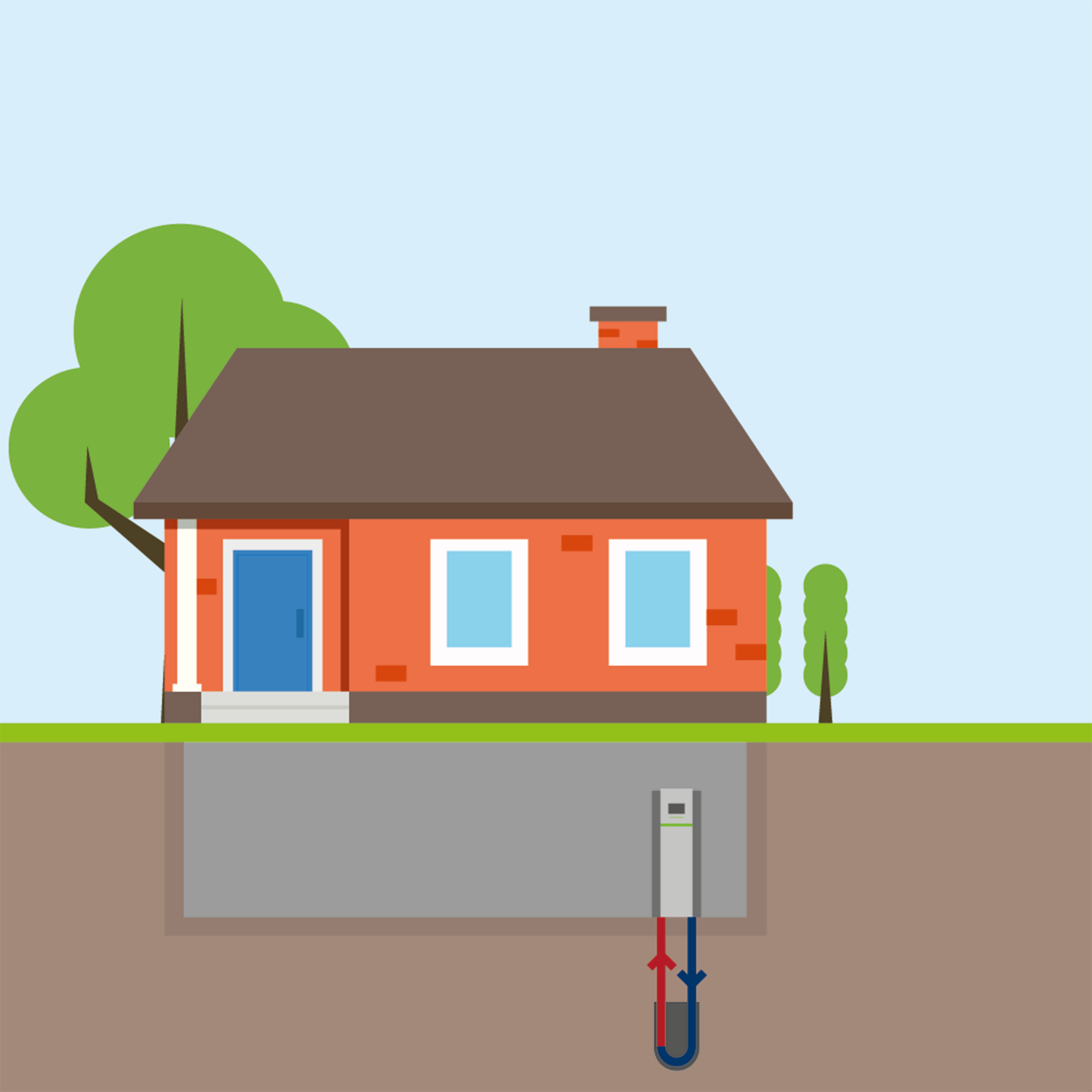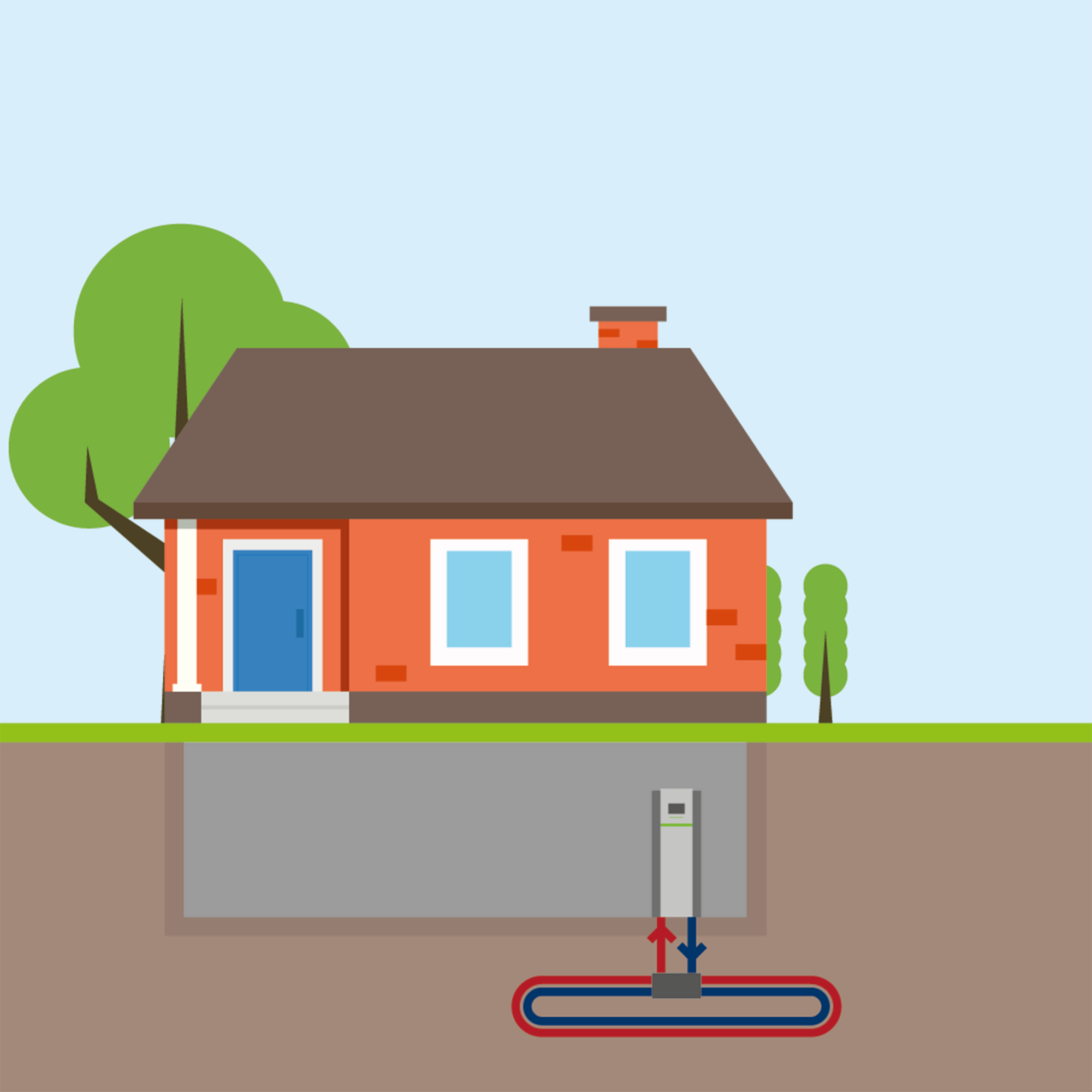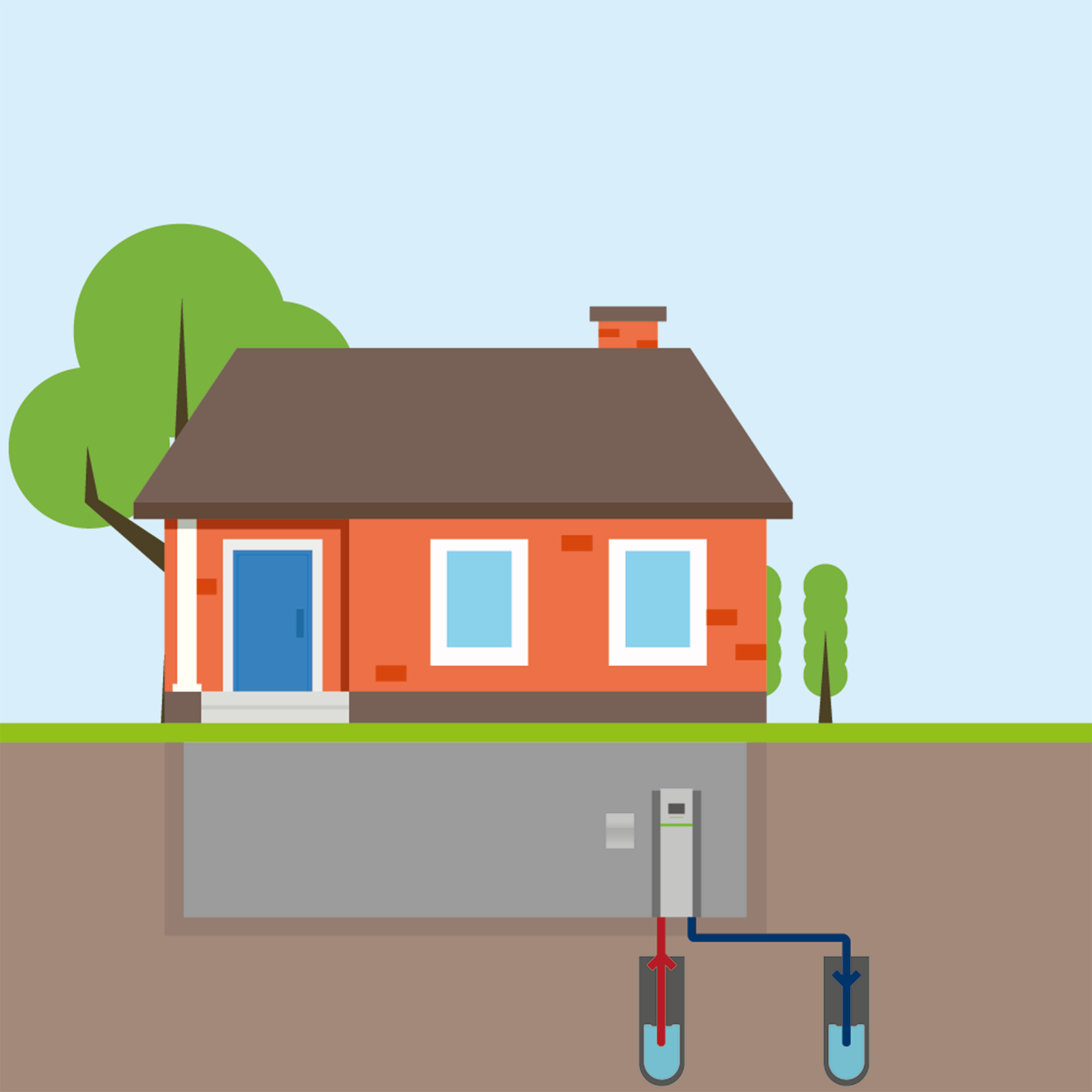Which heat pump is the right one?
Renewable energy for your home.

Air, geothermal or groundwater: heat pumps and their suitability
The heat pump has established itself as a future-proof and energy-efficient heating system. Whether for a new build or the modernisation of an existing building, the choice of the right heat pump depends largely on the conditions of the property and the site.
This guide provides guidance to help you find the optimum heat pump solution for various requirements and set the course for a sustainable heat supply. The specific requirements for detached houses, apartment blocks and integration into existing heating systems are highlighted.
Benefits of heat pumps
- Lower heating costs
- 3 to 5 times more efficient than gas heating systems (1 kWh of electricity produces 3-5 kWh of heat).
- Independence from fluctuating gas prices.
- Elimination of CO₂ tax on fossil fuels.
- Possibility of more favourable heat pump electricity tariffs.
- Ideal in combination with photovoltaics (self-consumption of electricity).
- State subsidy
- Up to 70 % of eligible costs can be subsidised.
- Composition of the subsidy: basic subsidy (30 %), climate speed bonus (up to 20 %), income bonus (30 %) and efficiency bonus (5 %).
- Future security & climate protection
- Fulfilment of the requirements of the Building Energy Act (GEG) - 65% renewable energies.
- Virtually CO2-neutral operation (especially with green electricity).
- Independence from fossil fuels.
- Less maintenance & longer service life
- Fewer wearing parts and no combustion processes.
- Lower maintenance costs and longer system service life.
- Use in existing buildings
- Modern heat pumps can also be used in existing and old buildings.
- Often compatible with low-temperature radiators.
- Additional cooling function
- Many heat pumps can also be used to cool buildings in summer.
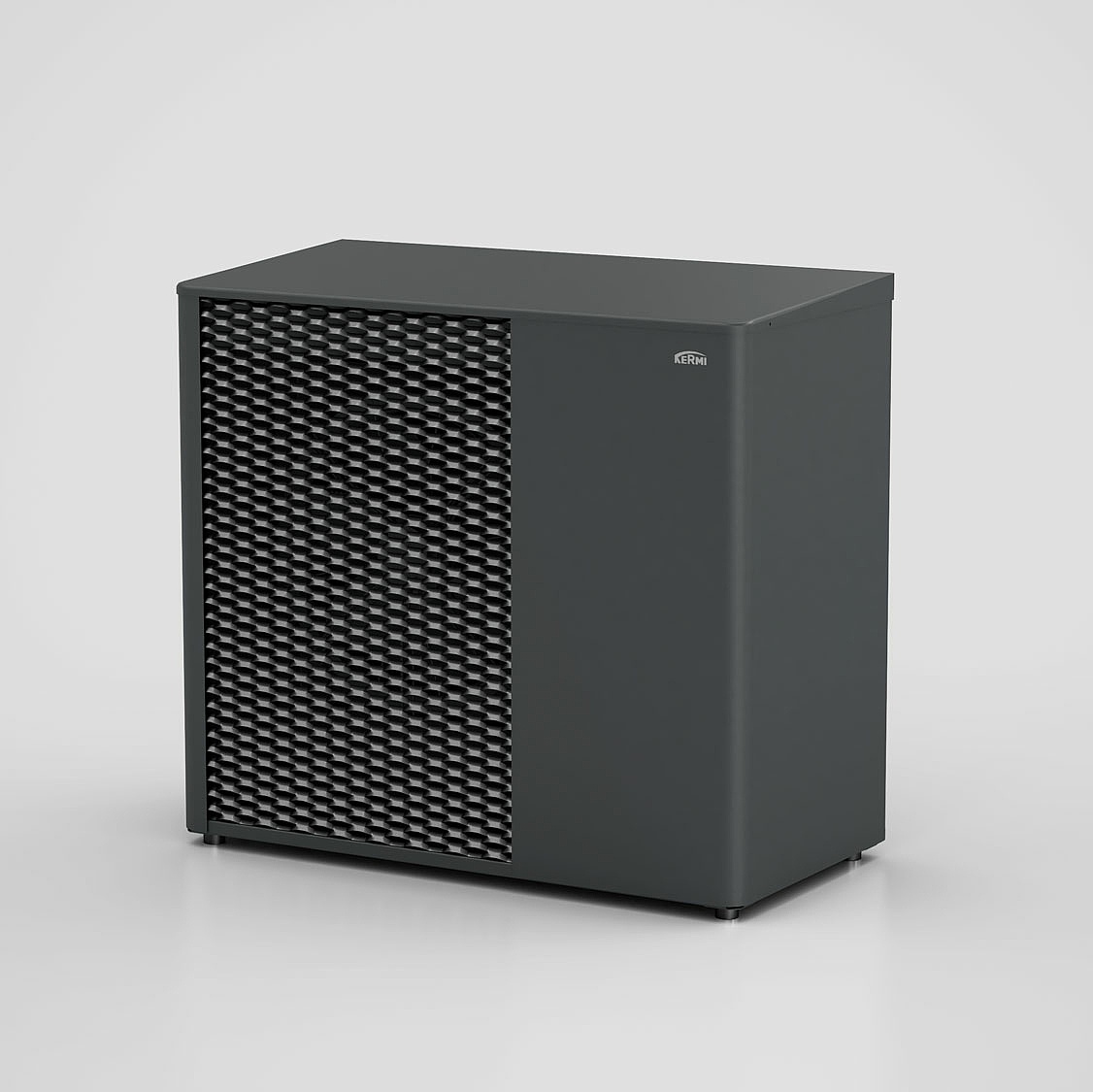
New build: Optimum solutions for your project
For new buildings, there are various heat pump systems to choose from that are ideally suited to the high efficiency standards of modern buildings.
New build with a smaller plot: air-to-water heat pump
How it works
Utilises the ambient air as a heat source.
Benefits
Low acquisition and development costs, flexible installation (indoors/outdoors), low maintenance costs, no authorisation required. Integration into photovoltaic systems and smart home systems is possible in the future.
Ideal for
Ideal for properties that do not permit deep drilling or large-scale ground collectors. It is particularly efficient in conjunction with low-temperature heating systems such as underfloor or wall heating.
New build with larger property: brine / water heat pumps (geothermal)
How it works
Extracts energy from the ground via geothermal collectors (flat) or geothermal probes (vertical deep boreholes).
Benefits
Particularly high efficiency and low operating costs due to constant ground temperature. Low maintenance costs. Integration into PV systems and smart home systems is possible in the future.
Prerequisite
Sufficiently large plot of land with suitable geology and free space for development.
New build with larger plot: water-to-water heat pump (groundwater)
How it works
Utilises the constant heat of the groundwater via a suction and absorption well system.
Benefits
Highest efficiency of all heat pumps and very low operating costs. Low maintenance costs. Integration into PV systems and smart home systems is possible in the future.
Prerequisite
Suitable hydrogeological conditions and permits for groundwater use.
Existing buildings: replace or add to
The use of a heat pump is also possible in existing buildings without any problems. It can be integrated either as the sole source of heating or in combination with the existing heating system.
Replace existing heating system: Monovalent operation
How it works
The heat pump serves as the sole heat generator in the house.
Benefits
Low development costs (no deep drilling), no authorisation required, flexible installation, low maintenance costs.
Prerequisite
Energy modernisation of the building (e.g. good insulation of the roof and walls, triple glazing) and suitable low-temperature radiators or panel heating are crucial for efficiency.
Suitable systems
Mainly air-to-water heat pumps (outdoor or indoor installation).

Supplement existing heating system: Bivalent operation
How it works
The heat pump works in conjunction with the existing heating system. There are two main variants:
Bivalent-alternative mode of operation
The heat pump and the existing heating system alternate. The heat pump covers the demand up to a defined bivalence point (ideally between 2 °C and -6 °C); if the temperature falls below this point, the existing system takes over.
Advantages
Simple control, existing heating system can utilise higher flow temperatures if required.
Flexibility, utilisation of existing infrastructure, funding opportunities.
Bivalent-parallel operating mode
From a predefined bivalent value, both heat generators work together to cover the heating load at peak times.
Advantages
The heat pump covers a significantly higher proportion of the heat and hot water supply.
Flexibility, utilisation of existing infrastructure, funding opportunities.
Suitable systems
Mostly air-to-water heat pumps (outdoor or indoor installation).

Apartment block: Heat pumps in cascade connection
For buildings with several housing units and higher heating and cooling requirements, several heat pumps can be combined into one system together.
Multi-family house: Heat pumps in cascade connection
Mode of operation
Several heat pumps are connected in a cascade. Individual appliances are switched on or off depending on current demand.
Benefits
Increased operational reliability (the system continues to operate if one pump fails), effective adaptation to fluctuating demand, possibility of active cooling function.
Suitable systems
Air-to-water heat pumps are suitable for cascade connection.
